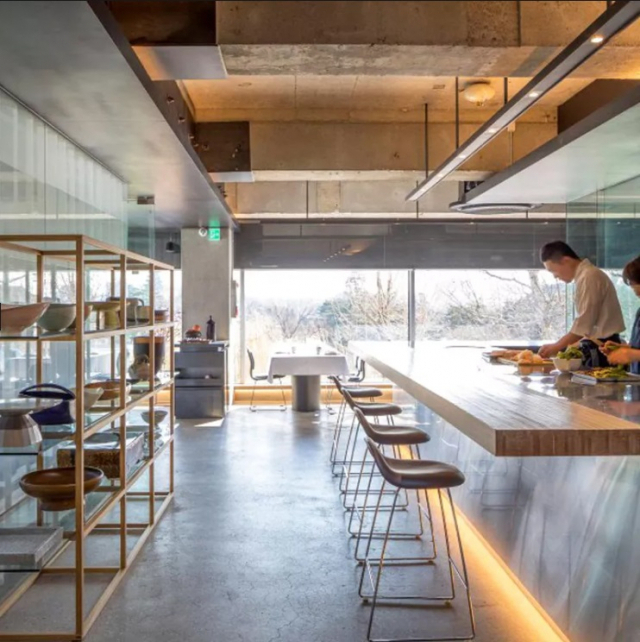 |
Interior of Onjium (Onjium) |
Every Monday at Onjium, a restaurant next to Gyeongbokgung Palace where the seasonal menus are inspired by Joseon-period royal cuisine, the hallways and kitchen counters are filled with fresh vegetables and special ingredients that have been flown in from around the country.
“For our seasonal winter menu, we are going to use pheasant from Goryeong in North Gyeongsang Province,” said Onjium Restaurant Head Chef Park Sung-bae.
“I still visit the market every week, such as Noryangjin fish market or Gyeong-dong market, to read the trend of seasonal ingredients. Of course we can simply order online but we believe that the taste of Korean food depends on the season and seasonal ingredients. I try to visit market as much as possible,” Park told The Korea Herald on Jan. 16.
“Our ancestors were clever to notice how a radish turns sweeter in winter, compared to its taste in summer. Bamboo sprouts are salted during spring and stored away, to be eaten during autumn when they have fermented," he said.
"But as there are vinyl greenhouses, we can order strawberries and fatsia shoots ("dureup" in Korean) even in winter -- although the right season for them is spring -- so we decide which ingredients to use in which season,” he added. “We may use fatsia shoots this winter if they taste good.”
At Onjium, the menu is changed every two months to reflect the season. Park believes using locally sourced seasonal ingredients allows for a revival of traditional court dishes and unique regional menus that also suit the palate of people today.
Chefs here work on modernizing the concept of royal food, seeking diversity in Korean cuisine.
“The people who enjoy the food and the ingredients have changed over time. We cannot 100 percent revive the old dishes with heritage, although many of the recipes have been passed down from generation to generation. Our aim is to revive the traditional Korean food with diversity, in terms of ingredients, and with modernity, in terms of target audience,” said Onjium Food Studio Head Artisan Cho Eun-hee, who is also responsible for the fine dining experience at Onjium.
Giving an example of how asparagus and coffee, once foreign, are now widely enjoyed by Koreans, Park added that finding the balance between tradition and contemporary is Onjium's distinctive concept.
“In case of dessert, we gave a Korean spin to western tiramisu by combining it with rice cake, or sometimes replacing byeonggwa (traditional cookie) with bread,” he added.
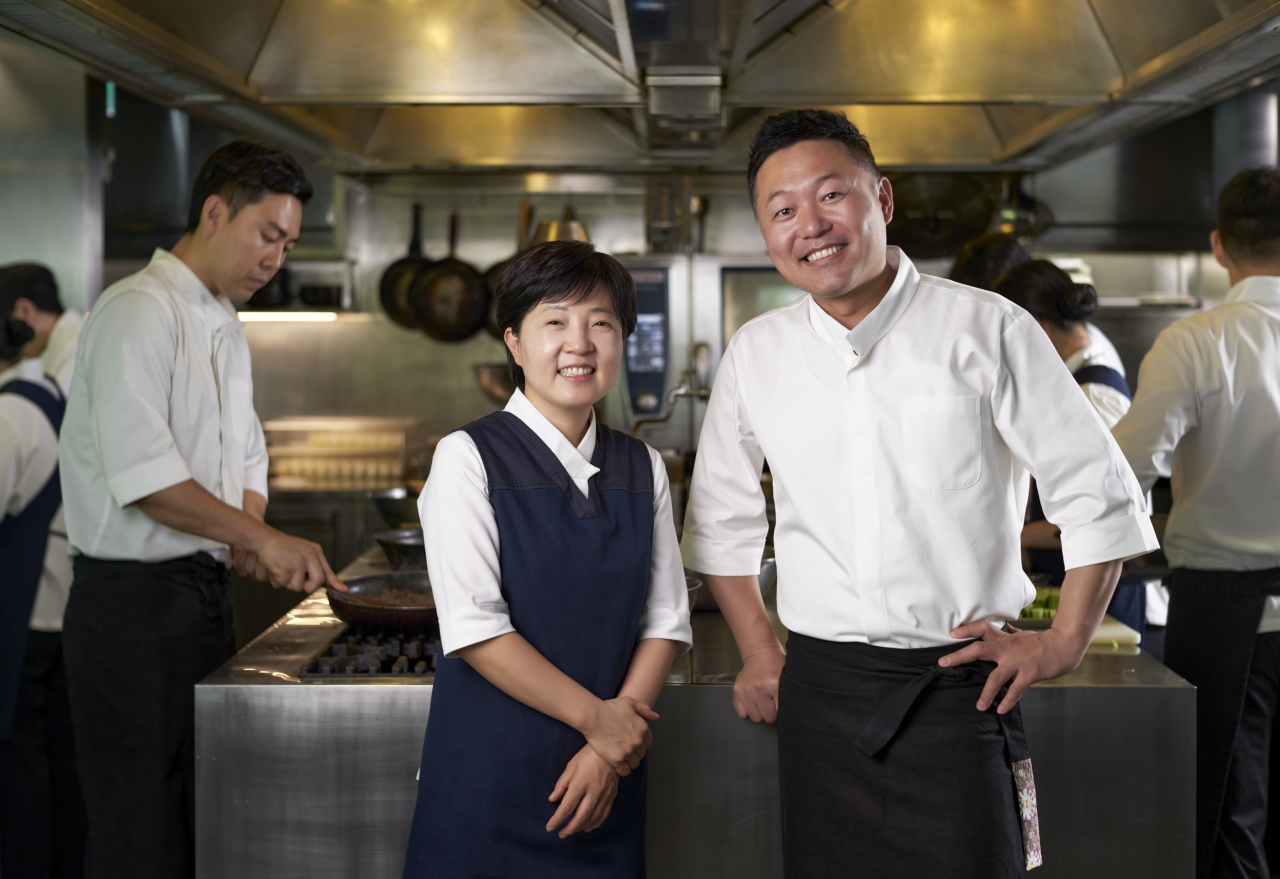 |
Onjium Food Studio Head Artisan Cho Eun-hee (left) and Onjium Restaurant Head Chef Park Sung-bae (Guruvisual, Inc.) |
Cho and Park together run the kitchen at Onjium, from brainstorming the menus to training aspiring chefs.
From the beginning in 2012, Onjium was established to run both customer-facing businesses such as the restaurant and a culinary research lab to study older recipes and devise ways to modernize them.
Onjium has an exclusive system for young chefs in which they work the first five years as researchers, the next five years as associate researchers and the next five years as an executive researcher. After 15 years in the kitchen as a “culinary researcher,” they become a master artisan.
Currently, a staff of 17 work with Park and Cho, master artisans in Onjium's system.
“The staff work with knowledge in the liberal arts and the humanities. We take history courses twice a month and write books after conducting research. Knowing and learning the country’s tradition and culture correctly really influences what we do,” said Park.
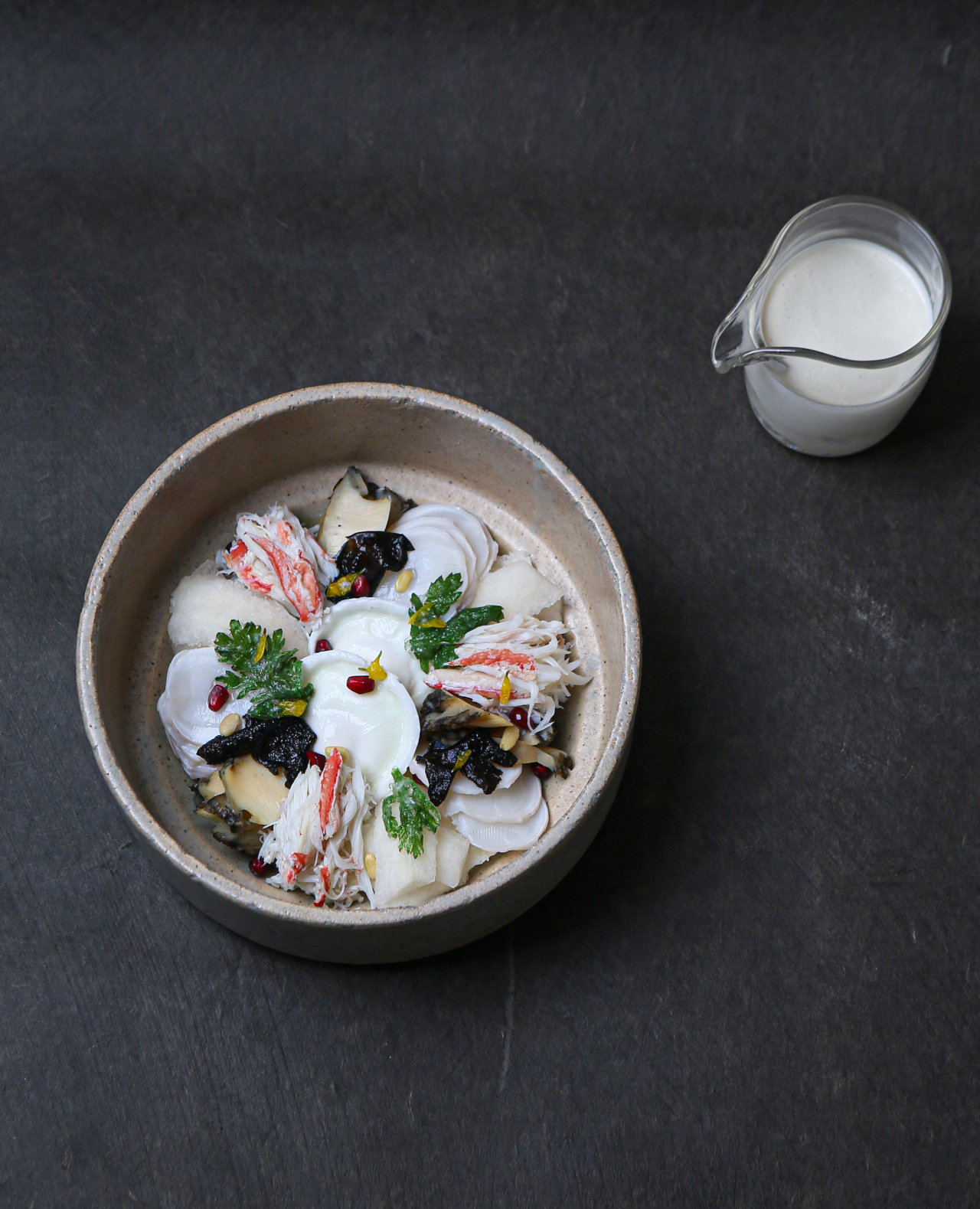 |
Sooranchae (poached egg salad with pine nut sauce) (credit: Onjium) |
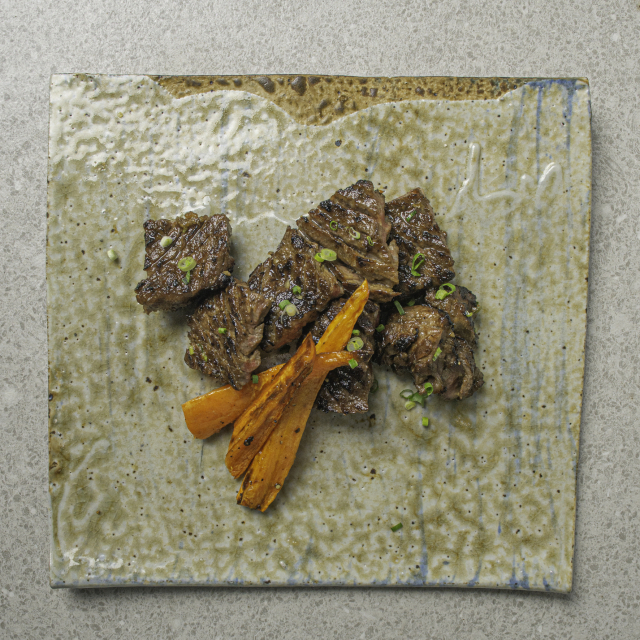 |
Grilled and marinated strip loin (Onjium) |
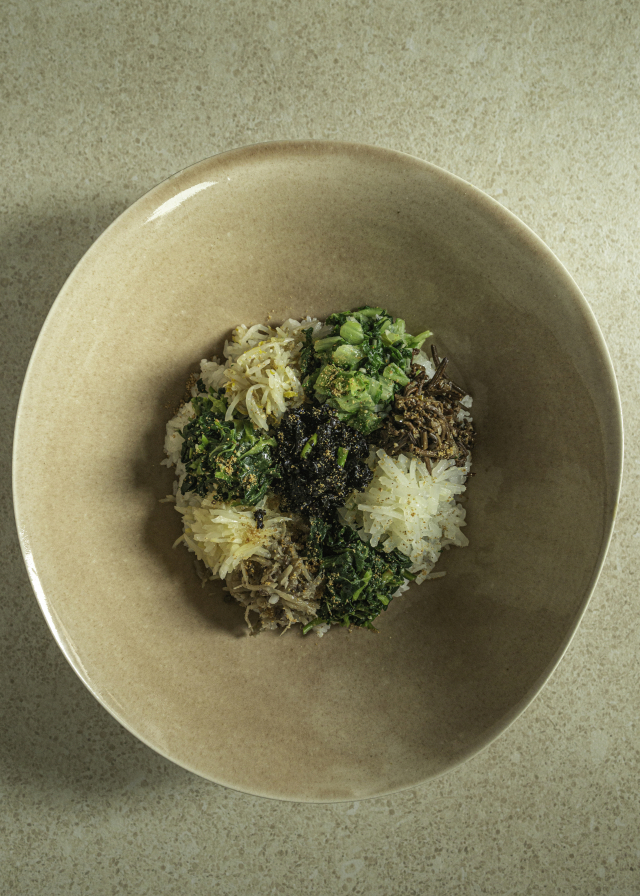 |
Jeonju bibimbap (Onjium) |
“Korean foods do not need extravagant garnishes or plating like Western dishes. Just like white porcelain jars, Korean beauty comes from the beauty of space. A discerning eye and a sophisticated perspective about Korean beauty are what all staff at Onjium need in order to make the food here,” Cho added.
Citing an idiom dating back to the Baekje period, both Cho and Park said what Onjium desires to pursue is the concept of “humble but not shabby, lavish but not extravagant."
Marking Onjium's 10th year, the two said they would like to focus on fermentation this year.
“I have recently worked on making traditional Korean liquor using different ingredients, some with chili powder and others with the liquid from kimchi. I want to make more unique liquors that have the color of Onjium and come up with distinctive pairings that customers can only experience here,” said Park.
“I want to do an in-depth study of traditional food, to unearth more dishes and do more research. Also, I will do a separate study on vegan food, sustainable food,” Cho said.







![[Today’s K-pop] Blackpink’s Jennie, Lisa invited to Coachella as solo acts](http://res.heraldm.com/phpwas/restmb_idxmake.php?idx=644&simg=/content/image/2024/11/21/20241121050099_0.jpg)